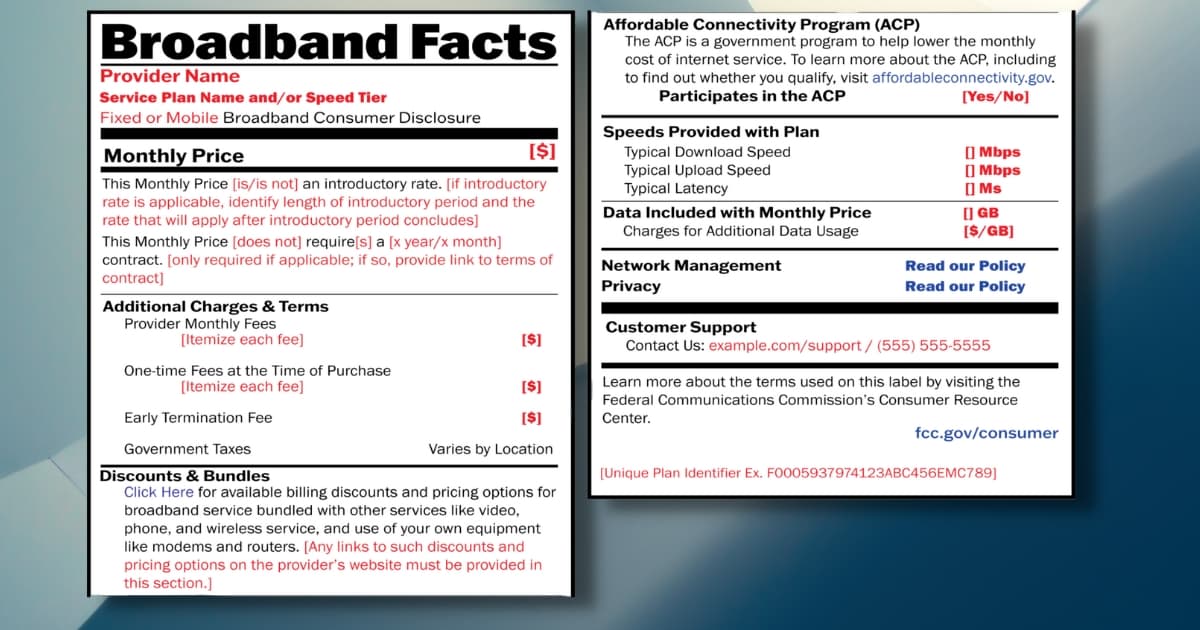Understanding internet service plans hasn’t always been easy. Consumers easily get themselves into a plan they think is fairly priced, only to be shocked when the “introductory” period expires and their monthly bill doubles or more. Even worse, buyers don’t always know about hidden fees and data usage costs. Thanks to new “Nutrition Labels” regulation by the FCC, broadband is set to become much easier to understand.
What Are Broadband Nutrition Labels?
The U.S. Federal Communications Commission (FCC) has recently approved new rules requiring broadband providers make their services easier to understand. New labels, designed to look much like the nutrition labels on food, should help make it easier for consumers to understand the ins and outs of their broadband service plans.
According to FCC Chairwoman Jessica Rosenworcel, “Broadband is an essential service, for everyone, everywhere.” With that in mind, regulators set out to ensure broadband providers do a better job of helping consumers know what they’re paying for and how it compares with other service offerings.
The new regulations require broadband labels for both wireless and wired service, showing critical information about the plans. Required details include prices, speeds, fees, data allowances and more. Importantly, broadband providers must use these nutrition labels to let consumers know if the price they pay is introductory, how long the introductory period is and what the price is after.
The Broadband Facts Label Should Appear Soon
The FCC approved regulations requiring the broadband facts label on Nov. 17, but the effective date has yet to be announced. The Commission still has more steps to complete, including adherence with the U.S. Paperwork Reduction Act. Once it rolls out, though, consumers should have a much easier time navigating the sometimes confusing waters of picking their internet plan.

As you can see from the image above, the label should provide a good snapshot of important information. The information required includes monthly pricing, whether or not a contract applies and additional terms and charges. The label also requires broadband providers to specify whether or not the plan qualifies for the U.S. Affordable Connectivity Plan, speeds provided by the plan and how much data the plan includes.
